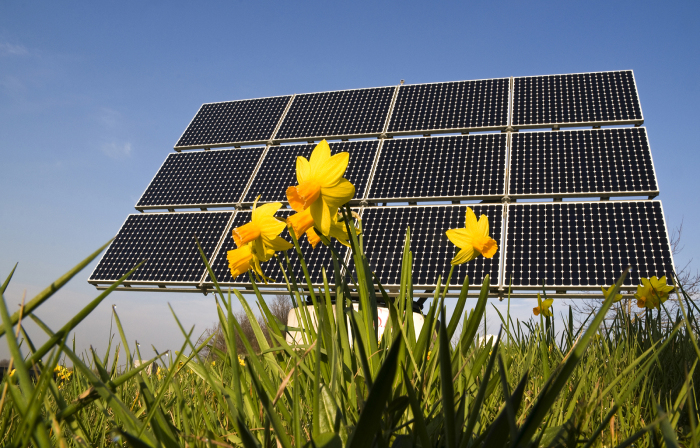March: in like a lion, out like a lamb?

According to the long-standing proverb, March comes in like a lion and goes out like a lamb. A succinct summation of the change in seasons from winter to spring which also feels appropriate as we weigh up what is on the horizon for the renewable energy industry.
A flurry of policy announcements has arrived over recent weeks, reflecting the pace often longed for in our transition to a clean energy system. The lion’s share amongst these was the Spring Budget delivered on March 6 by the Chancellor of the Exchequer.
Amidst ongoing stagnation in the UK economy, the economic contribution of clean energy has bucked the trend with the total gross value added (GVA) of businesses in the UK net-zero economy now standing at £74 billion – a 9% increase on 2023. In Scotland, the renewable energy industry is worth more than £10.1 billion, supporting over 42,000 jobs.
Once again, these figures demonstrate that our sector can offer the UK much needed green shoots of economic growth, with the development of renewable energy projects not only driving climate action but the deployment of high-value employment.
In that context, it was welcome to see HM Treasury uplift the Green Industries Growth Accelerator to more than £1 billion, of which £390 million will go towards Offshore Wind and Networks. As Scottish Renewables said last year, this provides a shot in the arm for our sector with tremendous potential.
The Spring Budget also delivered the initial parameters to the Contracts for Difference (CfD) Allocation Round 6 (AR6). Following the storm of Allocation Round 5 (AR5) which failed to procure any new offshore wind projects, AR6 is set to be a watershed moment for achieving the UK’s target of 50GW of offshore wind by 2030.
A silver lining to AR5 was that it brought into sharp focus the impact of global market pressures on the development of home-grown clean energy, prompting the UK Government to take several long-overdue reforms to CfD as repeatedly called for by industry.
Unfortunately, the winds of change did not carry into the AR6 budget which, despite welcome record-level investment, falls short of overcoming the gap in capacity caused by AR5. Initial analysis by industry shows that the AR6 budget as it stands will only deliver up to 5GW of offshore wind when at least 10GW will need to come forward this year and again next year.
Out like a lamb? An uplift to the AR6 budget will support crucial, multi-GW Scottish projects fly out of the traps and provide much needed confidence to our supply chain through the delivery of a more stable pipeline.
Next in a series of announcements was the launch of the second consultation for the review of electricity market arrangements (REMA), an ongoing process to identify reforms needed to support a cleaner, cheaper and more secure renewables-based electricity system.
Scottish Renewables has been clear that any electricity market reforms must not jeopardise the billions of pounds worth of investment needed to drive deployment of Scottish projects. Radical reforms, such as zonal pricing, would undermine policy stability and predictability which are critical for delivering a successful clean energy transition.
Out like a lamb? Timely delivery of REMA reforms which adopt an evolutionary, not revolutionary, approach will enable industry to deliver a modern electricity market that supports consumers.
On the forecast of reform, last month also saw the long-anticipated publication of the Electricity Systems Operator’s ‘Beyond 2030’ report, proposing a £58 billion investment to overhaul our electricity grid to meet the steep demand for electricity in the decade ahead.
The need for new transmission infrastructure to support our energy security and net-zero ambitions has roared up the political agenda over the past year. The ESO’s proposals demonstrate the scale of upgrades required to create a grid fit for the twenty-first century, enabling cross-sector decarbonisation and economic growth.
Out like a lamb? Accelerated efforts to remove barriers to boosting transmission capacity must also come with meaningful public engagement as to its benefit led by the Scottish and UK Governments in the months ahead.
The delivery of the next round in the Floating Offshore Wind Manufacturing Scheme was also announced last month, which is set to benefit the Port of Cromarty Firth and Port Talbot. A welcome boost to the Highlands, but a drop in the ocean given the scale of investment required to all strategic Scottish ports.
Investing in our ports is one of the most powerful steps we can take to unlocking economic growth and scaling-up supply chains in coastal communities. Upgrading our marshalling, manufacturing, assembly and quayside capabilities will ensure we maximise local content in the delivery of ScotWind and INTOG projects.
Out like a lamb? Urgently shoring-up investment, both public and private, into our ports must be a shared endeavour this year to seize the sea of opportunity in our offshore wind pipeline.
March comes to a close under the shadow of the Climate Change Committee’s latest progress in reducing emissions in Scotland report which casts doubt on our 2030 targets. While targets are deliberately stretching, they are absolutely deliverable and the CCC’s warning should only serve as a call to action.
Challenges lie ahead, but so do enormous opportunities. Let’s spring forward.
- Blog by Jack Norquoy, Public Affairs Manager